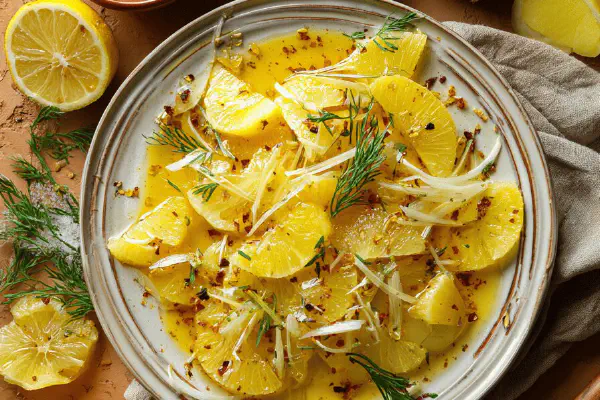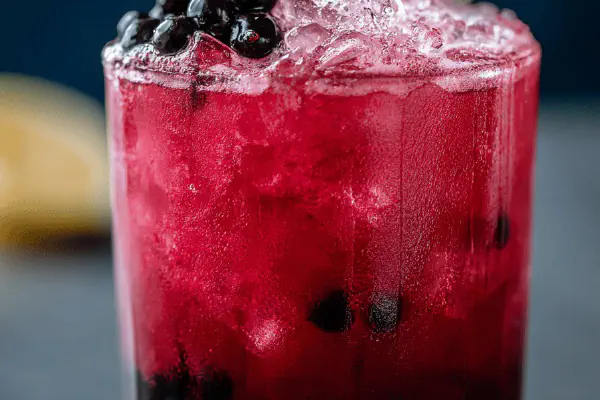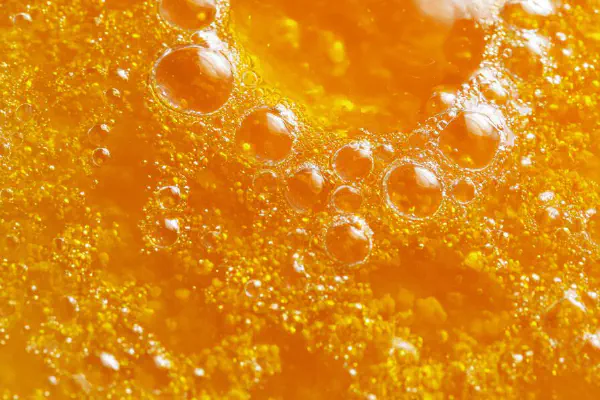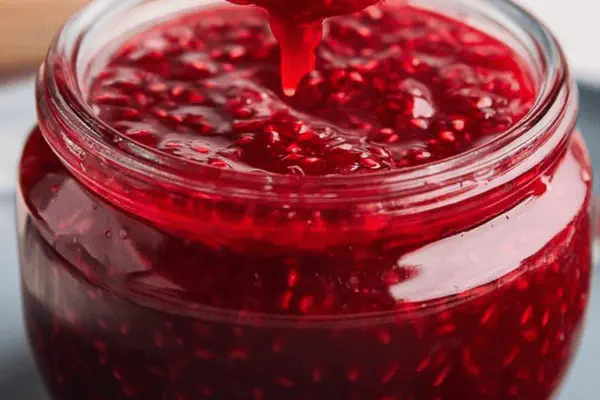Citrus Concentrate Syrup
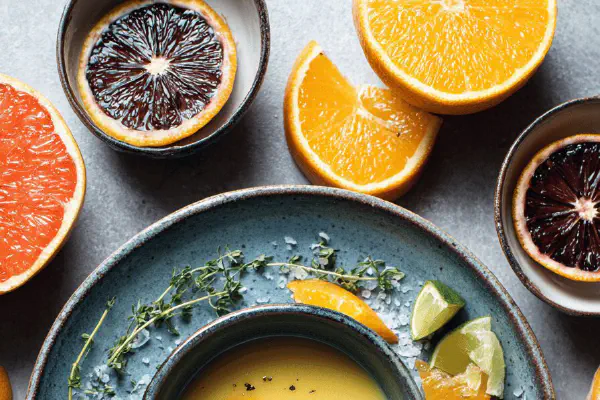
E
By Emma
Certified Culinary Professional
•
Recipe tested & approved
A vibrant, concentrated citrus syrup made by macerating fresh citrus zest with sugar then infusing it with fresh citrus juice. Adaptable with lemon, clementine, or small orange. Zesting carefully avoids bitter pith. Maceration draws out essential oils and bright aromas, developing deep flavours over several hours. Strained and refrigerated, it holds up to a month. Can sweeten drinks, drizzle on desserts, or mix into cocktails. Substituting maple sugar adds earthiness; lime juice injects tangy edge. No em dashes, just smooth commas and semicolons keep recipe tight.
Prep:
17 min
Cook:
Total:
Servings:
60 ml
#citrus
#syrup
#infusion
#maceration
#cocktails
#dessert topping
Zesting is magic here, but easy to screw up. I’ve scorched bright notes trying to rush the soak; patience builds layers, deep oils from zest breaking down into sugar. Sacrificing the bitter pith makes all the difference — after a few attempts I insist on taking the time. The juice brightens, but don’t dump it in too soon. Wait for the mixture to thicken, sugar granules melting, aromas bursting. The syrup glistens golden, thick enough to coat your spoon, playful tang on the tongue, not too cloying. Experimenting with maple sugar introduced earthiness; it changes the vibe, shifts the sweetness toward rustic. I sometimes swap in lime juice for bite. Refrigeration preserves the bouquet; forget it, it fades fast. You’ll notice early bubbles and a grainy feel if you skimp on maceration. Patience pays, flavor sings.
Ingredients
- 1 lemon or clementine or small orange
- 42 g sugar
- 48 ml fresh juice from the chosen citrus
- Optional twist: 1 tsp maple sugar replacing 1 tbsp regular sugar
About the ingredients
Pick fresh, unwaxed citrus — dull or dry skin means tired oils. Zesting tools matter; sharp peeler or microplane preferred. Avoid slow knives that tear zest, losing volatile aromas. Sugar anchors oils; white is classic, but substituting with light brown sugar adds caramel notes. Maple sugar is a wild-card, bringing a woody twist and delicate molasses hint — only do half sugar swap. Juice should be freshly squeezed; bottled lacks the brightness. Keep zest and juice from the same citrus for harmony, unless you want funky blends. Store made syrup airtight, refrigeration mandatory — otherwise it can ferment or turn grainy. Can scale recipe easily, but keep maceration times consistent. Over-macerating to 24 hours is an option but watch for bitterness extraction from zest membranes.
Method
- Wash citrus under cold running water. Peel zest using a vegetable peeler; only the colored part, avoid thick white pith - bitter, trash it if needed.
- With a small knife, carefully trim off any stubborn white bits from the zest for cleaner flavour; rough edges can muddy the syrup.
- Place zest in a bowl or mortar. Add sugar. Rub zest and sugar together with fingertips or a pestle until sugar is fragrant and moist, slightly sticky. The smell should hit you sharp – oils releasing, intense citrus punch.
- Transfer this gritty mixture to a clean, airtight jar. Leave at room temperature for around 2-3 hours minimum – sometimes I push to 24 but you can smell when it's ready. The sugar must partially dissolve and capture the zest oils.
- Add fresh citrus juice to the jar. Seal tightly and shake vigorously until sugar dissolves fully. It might take a good minute or two. You want smoothness, no grainy bits.
- Strain through a fine sieve or cheesecloth, pressing zest to extract all syrupy goodness. Discard pomace. The liquid should be translucent and syrup-thick, glossy, vibrant.
- Store in fridge, last up to 1 month if chilled well. Over time, flavours deepen but no more sugary crystals should appear.
- Substitution notes: Maple sugar for part of white sugar adds foresty depth, but syrup darkens. Lime juice swaps clean citrus flavor with zesty brightness; if too sour, add an extra pinch sugar.
- Common slip-up: don't rush zest soaking. Short maceration means weak syrup and loss of oils. Also, removing pith is painful but crucial - bitterness ruins the balance.
- Quick fix: If no mortar, muddle zest and sugar vigorously in a bowl or even with a wooden spoon; less efficient but works fine in pinch.
Cooking tips
Work in stages, don’t rush zest prep — removing pith is tedious but non-negotiable to avoid bitterness. Grinding zest with sugar opens pores, releasing essential oils; use fingers if no mortar, but pestle better for intense pressing. Maceration time flexible but minimum 2 hours to extract, 3 or more better to build depth. Shake vigorously after juice addition to fully dissolve sugar, prevents gritty texture. Straining frees syrup from rough plant bits — use fine sieve or cheesecloth. Watch syrup texture: too thin means insufficient sugar dissolution; too thick and syrup may crystallize when cold. I keep small jars for fresher batches, stirring before use if sugar has settled. If syrup granulates, warm gently in a double boiler to re-liquefy without heat damage.
Chef's notes
- 💡 Zest peeling - go for just colored layer; pith is bitter, ruins syrup. Use sharp peeler or microplane only. Thick or torn zest loses oils and adds harsh notes. If stubborn white bits cling use small knife to trim clean. Patience here sets base.
- 💡 Sugar and zest grinding - rub with fingertips or pestle until moist and fragrant. You want rough, gritty texture not powder. Oils release with pressure feel sticky, smell sharp citrus punch right away. Don’t rush or skip; intensity depends on thorough rub.
- 💡 Maceration time flexible; minimum 2 hours extracts oils, 3 better for depth. 24 works but risk bitterness creeping from membranes. Room temp best. Watch closely; early bubbles or graininess means too short or long soaking. Smell and texture guide you.
- 💡 Juice addition - fresh always; bottled lacks brightness. Shake jar vigorously after adding juice until sugar fully dissolved. Takes 1-2 minutes. No grainy sugar bits allowed. Thickness depends on sugar dissolution; too thin means weak flavor, too thick risks crystals.
- 💡 Strain well through fine sieve or cheesecloth, press zest firmly. Pomace is bitter, discard fully. Syrup should look translucent, glossy, syrup-thick. If sediment or cloudiness, re-strain. Store in airtight containers, fridge mandatory to prevent fermentation or crystal formation.
Common questions
How long to macerate zest?
Minimum 2 hours for oil extraction. Longer 3-24 hours build flavor. Beware bitterness if over 24. Watch smell and slight bubbling. Adjust times for citrus type.
Can I use brown sugar?
Yes but flavor shifts caramel, darker syrup. Maple sugar adds woody hints but halves sugar swap only. White sugar classic base. Each choice changes aroma and color.
Why syrup crystallizes?
Sugar not fully dissolved or syrup too thick cold. Shake vigorously when adding juice. Warm gently to fix, no direct heat. Store cold, airtight slows crystals. Faster use recommended.
Best storage method?
Airtight jar in fridge is must. Keeps month approx. Room temp ferments, grainy forms. Freeze not great - texture changes. Small jars better, stir if sugar settles.
